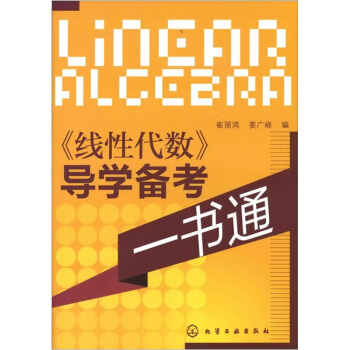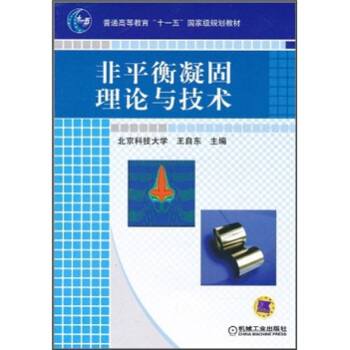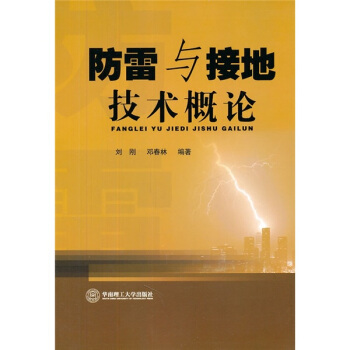

具体描述
内容简介
《固态物理学(第1卷)》是以作者1971年的教材为蓝本,增加了许多最新研究成果,内容几乎扩展为原来的两倍。全书共十二章,为了阅读方便,现分为上、下两卷,前六章为上册,后六章为下册。读者需有一定的物理和数学背景。固态物理学将物理领域的多个概念有机结合,用最基本的方法讲述固体材料是如何工作的。固态物理学也定义为从物理规律研究固体的物理性质。从某种意义上说,本学科与物理学别的分支不一样,更像是化学,研究材料的大量普通性质。《固态物理学(第1卷)》对固态物理学的讲述也是从最基本的定义开始,层层递进,节节深入,符合读者的逻辑思维方式。每章末都附有习题,有助于读者更好的理解本章所学内容。目次;晶体键联和结构;晶格振动和热性质;周期势场中的电子;电子和晶格振动的相互作用;金属,铝和费米面;半导体;磁性,磁子和磁共振;超导;电介质和铁电体;固体的光学性质;固态中的亏量;固体凝聚态物理学中的最新议题;附录。读者对象:物理学领域的研究生专业课教科书和研究人员参考书。
目录
1 crystal bindinr and structure1.1 classification of solids by binding forces (b)
1.2 group theory and crystallography
problems
2 lattice vibrations and thermal properties
2.1 the bom-oppenheimer approximation (a)
2.2 one-dimensional lattices (b)
2.3 three-dimensional lattices
problems
3 electrons in periodic potentials
3.1 reduction to one-electron problem
3.2 one-electron moaels
problems
4 the interaction of electrons and lattice vibrations
4.1 particles and interactions of solid-state physics (b)
4.2 the phonon-phonon interaction (b)
4.3 the eiectron-phonon interaction
4.4 brief comments on electron interactions(b)
4.5 the boltlanann equation and electrical conductivity
4.6 transport coefficients
problems
5 metals, alloys, and the fermi surface
5.1 fermi surface (b)
5.2 the fermi surface in real metals (b)
5.3 experiments related to the fermi surface (b)
5.4 the de haas-van a!phen effect (b)
5.5 euteeties (ms, me)
5.6 peierls instability of linear metals (b)
5.7 heavy fermion systems (a)
5.8 eleetromigration (ee, ms)
5.9 white dwarfs and chandrasekhars limit (a)
5.10 some famous metals and alloys (b, met)
problems
6 semiconductors
6.1 electron motion
6.2 examples of semiconductors
6.3 semiconductor device physics
problems
7 magnetism, magnons, and magnetic resonance
7.1 types of magnetism
7.2 origin and consequences of magnetic order
7.3 magnetic domains and magnetic materials(b)
7.4 magnetic resonance and crystal field theory
7.5 brief mention of other topics
problems
8 superconductivity
8.1 introduction and some experiments (b)
8.2 the london and ginzburg-landau equations (b)
8.3 tunneling(b, ee)
8.4 squid: superconducting quantum interference (ee)
8.5 the theory of superconductivity(a)
8.6 magnesium diboride (ee, ms, met)
8.7 heavy-electron superconductors (ee, ms, met)
8.8 high-temperature superconductors (ee, ms, met)
8.9 summary comments on superconductivity (b)
problems
9 dielectrics and ferroelectrics
9.1 the four types of dielectric behavior (b)
9.2 electronic polarization and the dielectric constant (b)
9.3 ferroelectric crystals (b)
9.4 dielectric screening and plasma oscillations (b)
9.5 free-electron screening
problems
10 optical properties of solids
10.1 introduction (b)
10.2 macroscopic properties (b)
10.3 absorption of electromagnetic radiation-general (b)
10.4 direct and indirect absorption coefficients (b)
10.5 oscillator strengths and sum rules (a)
10.6 critical points and joint density of states (a)
10.7 exciton absorption (a)
10.8 imperfections (b, ms, met)
10.9 optical properties of metals (b, ee, ms)
10.10 lattice absorption, restrahlen, and polaritons (b)
10.11 optical emission, c)ptical scattering and photoemission (b)
10.12 magneto-optic effects: the faraday effect (b, ee, ms)
problems
11 defcts in solids
11.1 summary about important defects (b)
11.2 shallow and deep impurity levels in semiconductors (ee)
11.3 effective mass theory, shallow defects, and superlattices (a)
11.4 color centers (b)
11.5 diffusion (met, ms)
11.6 edge and screw dislocation (met, ms)
11.7 thermionic emission (b)
11.8 cold-field emission (b)
11.9 mierogravity (ms)
problems
12 current topics in solid condensed-matter physics
12.1 surface reconstruction (met, ms)
12.2 some surface characterization techniques (met, ms, ee)
12.3 molecular beam epitaxy (met, ms)
12.4 heterostmctures and quantum wells
12.5 quantum structures and single-electron devices (ee)
12.6 superlattices, bloch oscillators, stark-wannier laders
12.7 classical and quantum hall effect (a)
12.8 carbon - nanotubes and fu!lerene nanotechnology (ee)
12.9 amorphous semiconductors and the mobility edge (ee)
12.10 amorphous magnets (met, ms)
12.11 soft condensed matter (met, ms)
problems
appendices
a units
b normal coordinates
c derivations of biochs theorem
d density matrices and thermodynamics
e time-dependent perturbation theory
f derivation of the spin-orbit term from dimes equation
g the second quantization notation for fermions and bosons
h the many-body problem
bibliography
chapter 1
chapter 2
chapter 3
chapter 4
chapter 5
chapter 6
chapter 7
chapter 8
chapter 9
chapter 10
chapter 11
chapter 12
appendices
subject references
further reading
index
前言/序言
用户评价
这本书我还没来得及细看,不过光是翻阅目录就已经被深深吸引了。那些熟悉的章节标题,像是“晶格振动”、“能带理论”、“电子输运”,仿佛把我带回了学生时代,勾起了对那段刻苦钻研的日子无限的回忆。我记得当年学习这些概念的时候,常常被那些抽象的数学公式和复杂的物理图像搞得头晕脑胀,但又不得不承认它们所蕴含的深刻的物理意义。这本书的编排似乎提供了一个全新的视角,让我得以重新审视这些曾经的“拦路虎”。我尤其期待它在“晶体结构与对称性”这部分的内容,当年对群论的应用一直有些模糊的认识,希望能在这本书里得到更清晰的阐释。而且,它提到了“多体效应”,这可是凝聚态物理的精髓所在,如果能有系统的介绍,那无疑将是一大收获。虽然我还没深入阅读,但可以预见,这是一本能够让我重新燃起学术热情,并且在原有基础上进一步提升理解深度的宝藏。我计划从“晶格振动”开始,一点点地啃,希望能像当年一样,在每一个公式、每一个图示中找到通往真理的钥匙。
评分这本书的内容划分,让人感觉非常系统化,并且涵盖了固态物理学的核心内容。我对“光学性质”这一章节特别期待,因为固态材料与光之间的相互作用,实在是太丰富太迷人了。从光的吸收、反射到透射,再到更复杂的非线性光学效应,这些都深深地吸引着我。这本书的目录中,明确提到了“电子跃迁”、“激子”、“极化率”等概念,这让我觉得它将深入地解析材料光学性质的微观根源。我希望它能解释清楚,为什么不同的材料有不同的颜色,为什么有些材料在特定频率的光下会发光,甚至能介绍一些光电器件的物理原理。另外,我一直对“缺陷”在固态材料中的作用感到好奇,例如,晶体中一个微小的缺陷,是如何影响材料的导电性、发光效率甚至是机械强度的?这本书在这个方面的内容,将是我非常感兴趣的部分,它应该能帮助我从更细致的角度理解材料的性质。
评分这本《固态物理学(第1卷)》给我的感觉,就像一位经验丰富的老友,用一种极其细致且富有条理的方式,为我铺陈开一个庞大而精密的物理世界。我特别欣赏它在概念引入上的循序渐进,并没有一开始就抛出那些让人望而生畏的复杂理论,而是从最基础的晶体结构开始,一步步引导读者建立起对固态物质微观结构的直观认识。当我翻到“布里渊区”和“费米面”的章节时,脑海中立刻浮现出当年在课堂上无数次尝试去理解和绘制这些图形的情景,这本书似乎能够用更直观的方式,甚至可能是丰富的插图和恰当的比喻,来帮助我跨越那道理解的鸿沟。它的语言风格也十分考究,不像是某些教科书那样干巴巴的公式堆砌,而是带着一种娓娓道来的叙事感,仿佛在讲述一个关于物质本质的迷人故事。我已经迫不及待地想深入研究“电子在晶体中的运动”这一章节,当年对如何从宏观的电阻现象过渡到微观的能带模型,一直心存疑虑,希望这本书能给我一个满意的解答。
评分这本书给我的整体印象是:严谨而又富有启发性。它并没有回避那些抽象的数学工具,但同时又尽可能地将它们与直观的物理图像相结合,让我在推导公式的过程中,也能感受到背后深刻的物理意义。我尤其关注“声子”这一概念,当年学习它的时候,总觉得它是一种抽象的“量子化的振动”,但具体是如何产生的,以及它在热学和电学性质中扮演的角色,我还需要更深入的理解。这本书在“晶格振动”部分,肯定会详细介绍声子的产生、传播和相互作用,这对我来说是至关重要的。我非常期待它能通过一些具体的例子,比如热容的计算,来展示声子的重要作用。此外,我也对“半导体物理”部分充满好奇,这可是现代电子工业的基石,希望这本书能清晰地讲解“本征半导体”、“杂质半导体”以及PN结的形成机理,让我能更好地理解我们日常生活中所使用的电子器件的工作原理。
评分不得不说,这本书的编排方式颇具匠心,它仿佛是一张精美的地图,带领我探索固态物理学的奇妙疆域。我对“磁性”这部分的内容格外感兴趣,因为在我的认知里,磁现象往往与微观粒子的自旋紧密相关,而如何从原子层面的磁矩耦合推导出宏观的磁性行为,一直是我比较困惑的地方。这本书的目录显示,它在这一章节安排了专门的篇幅,并且还涉及了“铁磁性”、“反铁磁性”等具体类型,这让我充满了期待。我希望它不仅能清晰地阐述这些概念的物理本质,还能给出一些实际的例子,比如磁性材料在现代科技中的应用,这样既能加深理解,又能激发我的学习兴趣。另外,“超导现象”也是我非常想深入了解的部分,当年接触到这个概念时,就被它那种“零电阻”的奇特性质深深震撼,希望能在这本书中找到关于超导机制的详尽解释,以及不同超导体的特性对比。
评分买来复习一下,通俗易懂。
评分牛逼书,内容太深了。非专业方向的还是拿来当专业装逼用吧。
评分适合固体物理课用,本科难度
评分买来复习一下,通俗易懂。
评分买来复习一下,通俗易懂。
评分买来复习一下,通俗易懂。
评分买来复习一下,通俗易懂。
评分还行。。。。。。。。。。。
评分牛逼书,内容太深了。非专业方向的还是拿来当专业装逼用吧。
相关图书
本站所有内容均为互联网搜索引擎提供的公开搜索信息,本站不存储任何数据与内容,任何内容与数据均与本站无关,如有需要请联系相关搜索引擎包括但不限于百度,google,bing,sogou 等
© 2025 book.coffeedeals.club All Rights Reserved. 静流书站 版权所有













![莫尔斯理论入门 [An Invitation to Morse Theory] pdf epub mobi 电子书 下载](https://pic.windowsfront.com/10762448/9f3b4db0-1256-4104-adc5-3f49c876c1b7.jpg)


![信号转导手册(5):G蛋白、发育生物学中的信号转导(原著第2版)(导读版) [Handbook of Cell Signaling(Second Edition)] pdf epub mobi 电子书 下载](https://pic.windowsfront.com/10802061/5398fc9bNf9c7c262.jpg)



